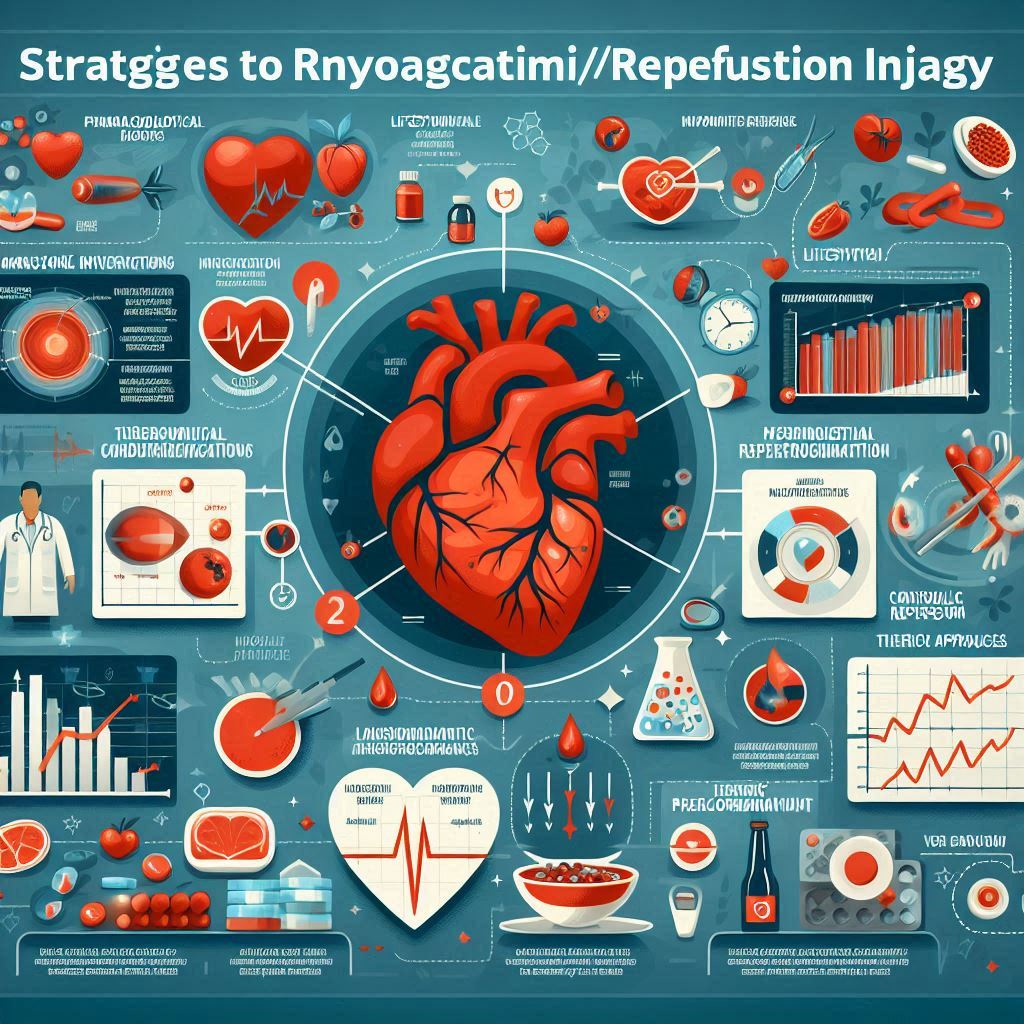How to Reduce Myocardial Ischemia/Reperfusion Injury ?
Targeting Myocardial Ischemia/Reperfusion Injury: Beyond Revascularization Introduction Myocardial ischemia/reperfusion injury occurs when blood supply returns to the heart after a period of ischemia, potentially leading to significant damage due to oxidative stress, inflammation, calcium overload, and mitochondrial dysfunction. Implementing strategies to reduce this injury is crucial for improving cardiac outcomes and protecting heart tissue during and after episodes of reduced blood flow. Ischemic heart disease remains the leading cause of mortality worldwide, claiming millions of lives each year. Despite advancements in medical science that have improved methods of revascularization — the restoration of blood flow to the heart — a critical aspect of myocardial damage, known as lethal reperfusion injury, continues to elude effective treatment. In this blog, we will explore the nuances of this phenomenon, the mechanisms at play, current therapeutic approaches, and future directions for research aimed at mitigating ischemia/reperfusion injury. Understanding Ischemia and Reperfusion Injury When blood flow to the heart is reduced or completely blocked, such as during a heart attack, the heart tissue becomes deprived of oxygen. This condition is known as ischemia. Revascularization procedures, which often involve angioplasty or bypass surgery, effectively restore blood supply to the affected area. However, this sudden influx of oxygen-rich blood also triggers a secondary injury known as reperfusion injury — a paradoxical worsening of tissue damage that can lead to additional myocardial cell death. Mechanisms of Reperfusion Injury Reperfusion injury results from a complex interplay of various cellular processes, including: The Importance of Therapeutic Targets Understanding these underlying mechanisms has elucidated numerous potential therapeutic targets. Researchers have identified various pharmacological approaches to protect the heart from reperfusion injury. These include: https://fuelforlife365.com/ Current Approaches to Therapy Over the last few decades, numerous clinical trials have attempted to translate these basic science findings into effective therapies for patients experiencing acute coronary syndromes. While some approaches show promise, many have not provided the expected benefits in clinical settings. This necessitates a deeper understanding of the complexities of reperfusion injury and a more tailored approach to treatment. For instance, some studies have indicated that preconditioning the heart (exposing it to brief episodes of ischemia) can bolster its defenses against subsequent ischemia/reperfusion injuries. Other strategies involve the use of emerging therapeutic agents that specifically target the pathways identified in research, promising a more directed approach to protecting the myocardium. For More Please Visit Here Future Directions The future of treating ischemia/reperfusion injury looks promising, as ongoing research continues to delve deeper into the mechanisms of myocardial protection. Here are several potential avenues: Conclusion While revascularization remains a critical component in the treatment of ischemic heart disease, it is clear that the management of reperfusion injury is equally crucial in preserving myocardial health. With a growing body of evidence supporting various pharmacological interventions, the hope is that more effective therapies will soon be available, reducing the burden of myocardial damage and improving patient outcomes. Ongoing research in this field will hopefully lead us to a future where myocardial ischemia/reperfusion injury is not only understood but also effectively managed, transforming the landscape of cardiac care.

